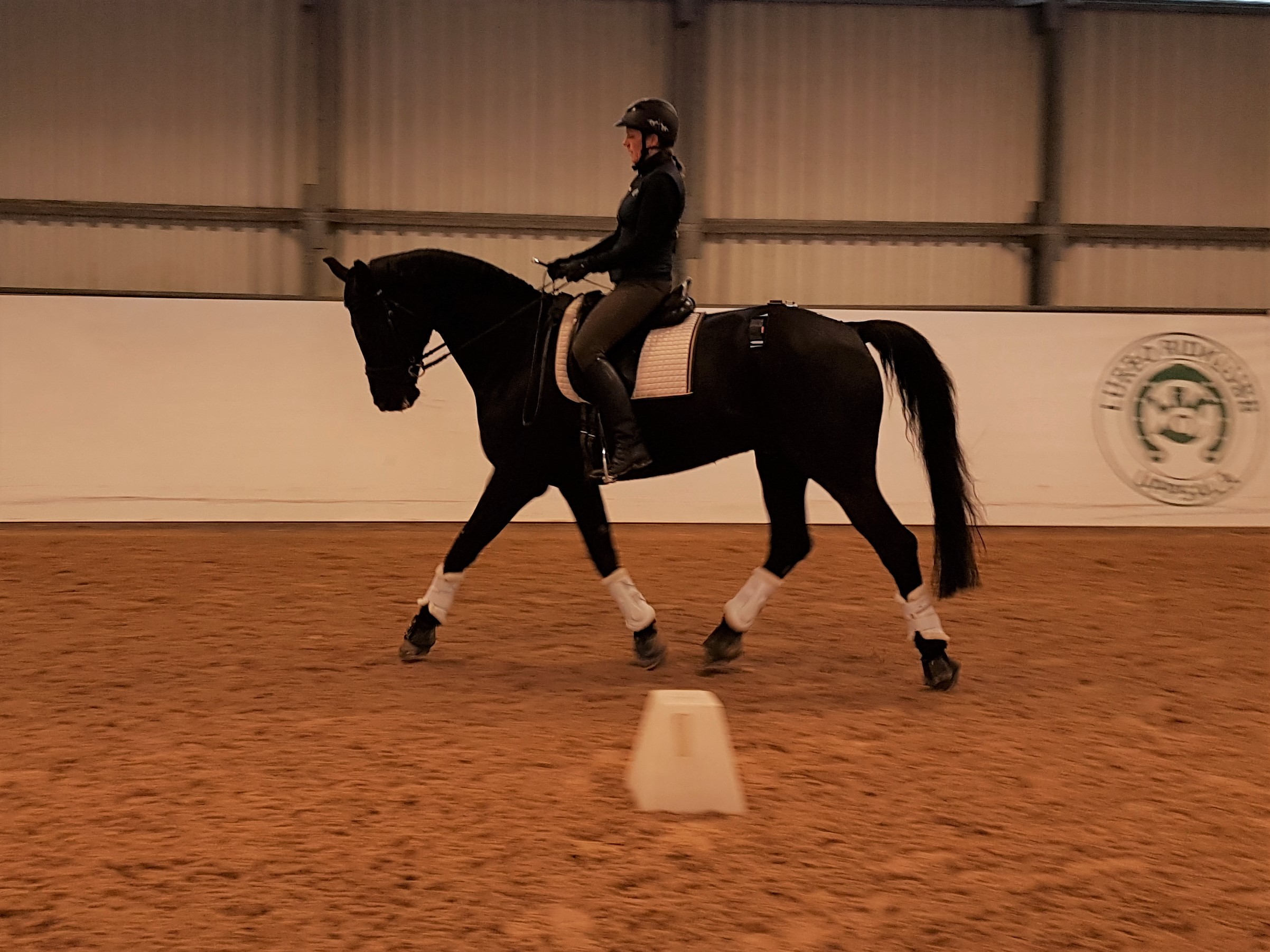Researching rider seating styles and horse movement
Equine research conducted in collaboration between researchers at the Swedish University of Agricultural Sciences in Uppsala and at the Royal Veterinary College (RVC) has been published in the journal PLOS ONE by the Public Library of Science.
The article entitled ‘Influence of seating styles on head and pelvic vertical movement symmetry in horses ridden at trot’ presents results of research concerning horse-rider interactions, in particular the movement of the horse. The research considers how different seating styles influence the movement symmetry of the horse’s head and pelvis.

The lead author, Emma Persson-Sjodin, is a doctoral (PhD) student, supervised by Associate Professor Dr Marie Rhodin in Uppsala and co-supervised by Thilo Pfau of the RVC. Dr Pfau is Senior Lecturer in Bio-Engineering and based at the RVC’s Structure and Motion Laboratory.
Explaining progress in the field and the value in collaboration between the two institutions, Dr Pfau said: “Equine gait analysis has undergone a recent transformation from a purely lab-based science to a practical tool that can be applied to analysing the movement of horses doing ‘everyday tasks’, such as exercise under the rider.
“This transformation has been driven by progress in sensor and wireless technology, and PhD students in this field often benefit from a multi-disciplinary team of supervisors. The complementary skillsets of the team from Uppsala and the RVC Structure and Motion Lab is one successful example of this multi-disciplinary approach.”
Detailed knowledge of how a rider’s seating style and riding on a circle influences the movement symmetry of the horse’s head and pelvis may aid riders and trainers in an early recognition of subtle levels of lameness (low-grade lameness). Such knowledge is also important during veterinary lameness or poor performance evaluations.
In the study, inertial sensors were used to assess how different rider seating styles influence head and pelvic movement symmetry in horses, two essential movements used by veterinary experts when assessing lame horses. In addition to the horses trotting in straight lines, they were also lunged and ridden in a circle in both directions.
In the research, 15 different conditions at trot were assessed in 26 horses. These included three unridden conditions and 12 ridden conditions, where the rider performed three different seating styles (rising trot, sitting trot and two-point seat).
Rising trot induced systematic changes in movement symmetry of the horses. The most prominent effect was decreased pelvic rise that occurred as the rider was actively rising up in the stirrups, thus creating a downward momentum counteracting the horse’s push off. This mimics a push off type lameness in the hindlimb that is in stance when the rider sits down in the saddle during the rising trot.
On the circle, the asymmetries induced by rising trot on the correct diagonal counteracted the circle induced asymmetries, rendering the horse more symmetrical. This finding offers an explanation to the equestrian tradition of rising on the ‘correct diagonal’ likely making the underlying more symmetrical movement of the horse more comfortable for the rider.
Some of the horses showed small pre-existing movement asymmetries when trotted in hand on the straight. In these horses, the asymmetry induced by rising trot, as well as the circular track, attenuated or reduced the horse’s baseline asymmetry, depending on the sitting diagonal and direction on the circle. This should be kept in mind when assessing a horse for lameness during ridden exercise since the horse may – depending on the exact exercise – appear more or less asymmetrical.
In horses with pre-existing lameness, a push off hindlimb lameness would, according to the results of this study, be expected to increase when the rider sits during the lame hindlimb stance, whereas an impact hindlimb lameness would be expected to decrease. This theory needs to be studied further in clinically lame horses.
Emma Persson-Sjodin explained: “For riders and clinicians it is equally important to note that rising trot induces asymmetric movement that mimics low-grade hindlimb lameness. It is essential to remember that when this ‘false lameness’ appears to be related to different limbs when the rider switches rising diagonal and is of equal magnitude on both diagonals, it should not be mistaken for a real lameness. It is more likely related to the rising trot.
“For riders wishing to highlight a possible subtle lameness the findings in this study suggests that trot on a circle and rising on the incorrect diagonal renders a horse’s pre-existing lameness most visible in one of the two directions.”
Emma added: “It is our hope that the results of this study will aid riders and trainers in early detection of lameness and veterinarians in correct identification of the lame limb. A timely recognition and a correct diagnosis is essential for appropriate treatment and a good prognosis avoiding further progression into chronic orthopaedic disease. Improvements in lameness detection and diagnosis will lead to improved welfare and increased longevity of our horses which is a general aim of our research group.”
